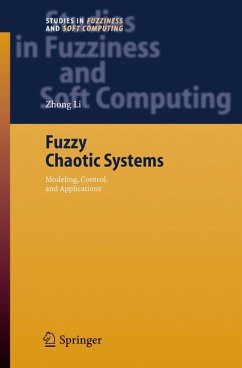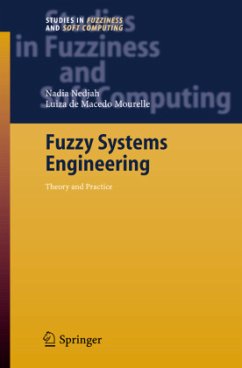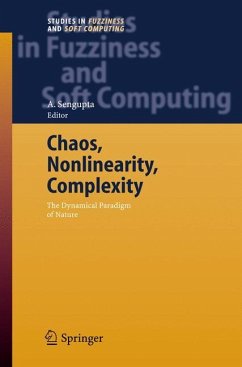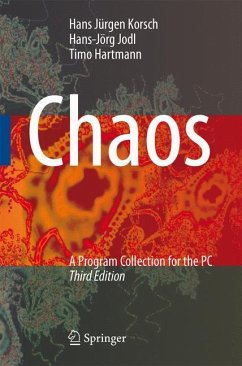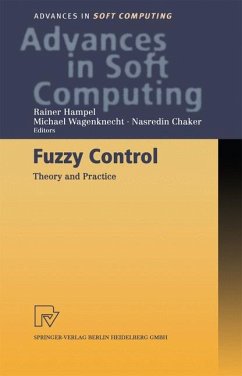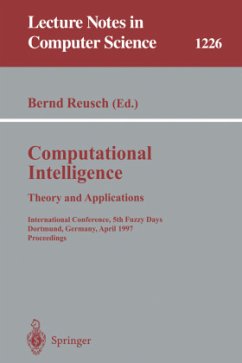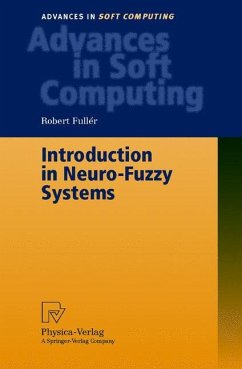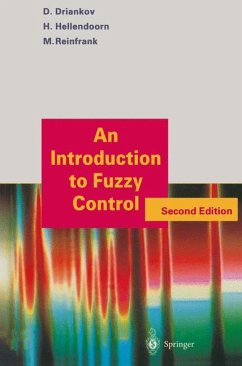
Integration of Fuzzy Logic and Chaos Theory
Versandkostenfrei!
Versandfertig in 1-2 Wochen
153,99 €
inkl. MwSt.

PAYBACK Punkte
77 °P sammeln!
This book attempts to present some current research progress and results on the interplay of fuzzy logic and chaos theory. More specifically, this book includes a collections of some state-of-the-art surveys, tutorials, and application examples written by some experts working in the interdisciplinary fields overlapping fuzzy logic and chaos theory. The content of the book covers fuzzy definition of chaos, fuzzy modeling and control of chaotic systems using both Mamdani and Takagi-Sugeno models, fuzzy model identification using genetic algorithms and neural network schemes, bifurcation phenomena and self-referencing in fuzzy systems, complex fuzzy systems and their collective behaviours, as well as some applications of combining fuzzy logic and chaotic dynamics, such as fuzzy-chaos hybrid controllers for nonlinear dynamic systems, and fuzzy-model-based chaotic cryptosystems. This book can serve as a handy reference for researchers working in the interdisciplines related, among others, to both fuzzy logic and chaos theory.
The 1960s were perhaps a decade of confusion, when scientists faced d- culties in dealing with imprecise information and complex dynamics. A new set theory and then an in?nite-valued logic of Lot? A. Zadeh were so c- fusing that they were called fuzzy set theory and fuzzy logic; a deterministic system found by E. N. Lorenz to have random behaviours was so unusual that it was lately named a chaotic system. Just like irrational and imaginary numbers, negative energy, anti-matter, etc., fuzzy logic and chaos were gr- ually and eventually accepted by many, if not all, scientists and engineers as fundamental concepts, theories, as well as technologies. In particular, fuzzy systems technology has achieved its maturity with widespread applications in many industrial, commercial, and technical ?elds, ranging from control, automation, and arti?cial intelligence to image/signal processing,patternrecognition,andelectroniccommerce.Chaos,ontheother hand,wasconsideredoneofthethreemonumentaldiscoveriesofthetwentieth century together with the theory of relativity and quantum mechanics. As a very special nonlinear dynamical phenomenon, chaos has reached its current outstanding status from being merely a scienti?c curiosity in the mid-1960s to an applicable technology in the late 1990s. Finding the intrinsic relation between fuzzy logic and chaos theory is certainlyofsigni?cantinterestandofpotentialimportance.Thepast20years have indeed witnessed some serious explorations of the interactions between fuzzylogicandchaostheory,leadingtosuchresearchtopicsasfuzzymodeling of chaotic systems using Takagi-Sugeno models, linguistic descriptions of chaotic systems, fuzzy control of chaos, and a combination of fuzzy control technology and chaos theory for various engineering practices.



